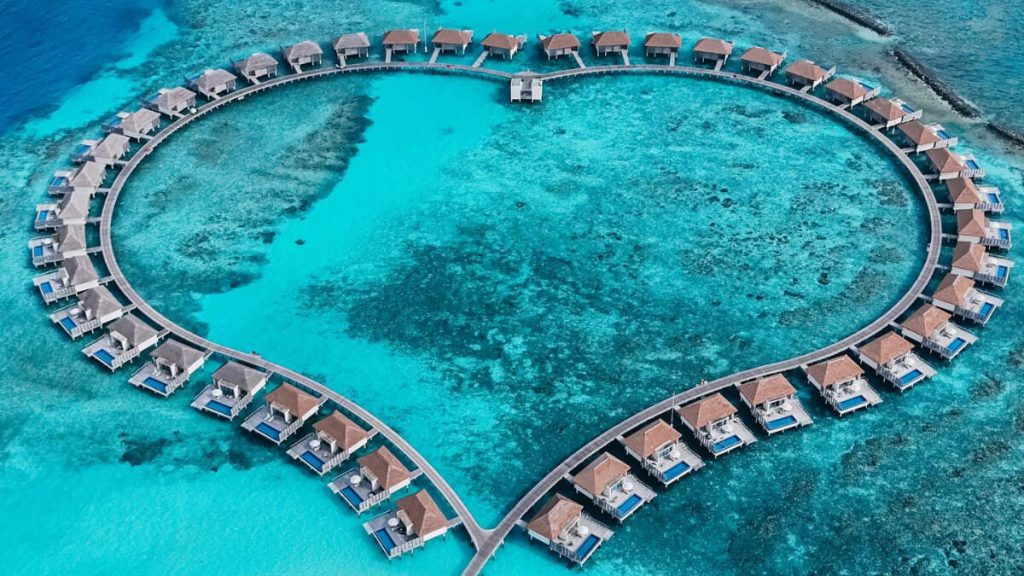Our planet is home to incredible natural wonders, each telling its own unique story of the Earth’s evolving landscape. However, some of these irreplaceable treasures are under threat due to a combination of climate change, environmental degradation, and human activity. Here are 18 natural wonders that, sadly, might not exist in the coming years, highlighting the urgent need for conservation efforts.
The Great Barrier Reef, Australia
This vibrant underwater world is suffering from coral bleaching due to rising sea temperatures, which stresses the coral and leads to a loss of algae that corals need to survive. Ocean acidification due to increased carbon dioxide levels further threatens this marine biodiversity hotspot.
The Amazon Rainforest, South America
This vast rainforest is being deforested at an alarming rate for agriculture, logging, and mining, reducing the habitat for countless species and releasing carbon dioxide into the atmosphere. The loss of this crucial ecosystem would have catastrophic effects on global climate patterns and biodiversity.
The Dead Sea, Middle East
Famous for its high salinity and buoyant waters, the Dead Sea is shrinking due to water being diverted from the Jordan River and mineral mining. Its retreat threatens the unique biological and tourism value of the region.
Glacier National Park, USA
Once boasting over 150 glaciers, now only a fraction remain, with experts predicting their complete disappearance if global warming continues at its current pace. The glaciers’ meltwater supports ecosystems both within and beyond the park’s boundaries during the dry months.
The Maldives
Positioned just meters above sea level, the Maldives faces the risk of becoming uninhabitable due to rising sea levels, which would not only displace thousands of people but also destroy the country’s rich marine life. The situation underscores the urgent need for global climate action to save low-lying nations.
Venice, Italy
The historic city of Venice is grappling with the dual challenges of sinking foundations and rising sea levels, leading to more frequent and severe flooding that threatens its iconic architecture and cultural heritage. Efforts to protect the city, such as the MOSE project, are underway but face technical and financial hurdles.
Madagascar’s Rainforests
These rainforests are being decimated by illegal logging, agriculture, and wildfires at an unsustainable rate, endangering the habitat of unique species such as lemurs and affecting local climate regulation. Conservation efforts are critical to preserving these ecosystems and the myriad of life they support.
The Arctic Ice Cap
Rapid melting of the Arctic ice cap due to global warming is not only a dire threat to species like polar bears and seals but also contributes to rising sea levels worldwide, which could affect billions of people. The Arctic’s shrinking ice also impacts indigenous communities and global weather patterns.
Mount Kilimanjaro, Tanzania
The iconic snowcap of Mount Kilimanjaro is disappearing due to climate change, with scientists estimating it could vanish in a few decades, affecting local water sources and the mountain’s unique ecosystems. This change serves as a visual indicator of the fast pace of global warming.
The Galápagos Islands, Ecuador
Facing pressures from invasive species, increased tourism, and climate change, the Galápagos Islands’ unique biodiversity, including species that inspired Darwin’s theory of evolution, is at risk. Protecting these islands is crucial for scientific research, conservation, and balancing their fragile ecosystems.
Banff National Park Glaciers, Canada
The glaciers within this iconic Canadian park are rapidly melting, affecting freshwater resources for millions and altering the landscape visitors and wildlife cherish. The loss of these glaciers clearly signals the need for environmental stewardship and climate change mitigation.
The Sundarbans, Bangladesh/India
This UNESCO World Heritage Site, known for its unique tiger population, faces the threat of rising sea levels and increased cyclone activity, which could lead to the loss of this critical mangrove ecosystem. The Sundarbans serve as a vital protective barrier against flooding for millions of people.
Lake Chad, Africa
Once one of the largest lakes in Africa, Lake Chad has significantly reduced in size due to extended drought, overuse of water for irrigation, and climate change, affecting the livelihoods of millions who depend on it for fishing and agriculture. The shrinking of Lake Chad is a dramatic example of how climate variability and human activity can impact water resources.
The Alps
The glaciers in the European Alps are melting at an unprecedented rate, threatening the region’s freshwater supply, biodiversity, and the ski industry. The retreat of Alpine glaciers is a stark reminder of the immediate effects of climate change on mountain environments.
Joshua Tree National Park, USA
The park’s namesake Joshua trees struggle to survive in the face of hotter temperatures and less predictable rainfall, posing a significant threat to the future of these iconic desert landscapes. Conservation efforts are vital to protect these unique trees and the biodiversity they support.
The Great Wall of China
Although not a ‘natural’ wonder, this ancient marvel faces threats from erosion, sandstorms, and human damage, which slowly degrade its structure and historical significance. Preserving the Great Wall is essential for maintaining a link to the past and for future generations to appreciate its grandeur.
Patagonian Ice Fields, South America
The massive ice fields in Patagonia are retreating rapidly due to rising global temperatures, which leads to rising sea levels and the disruption of local ecosystems. These ice fields are crucial water sources for the region, and their loss would have profound environmental impacts.
The Seychelles
Like the Maldives, the Seychelles is another island nation fighting for its survival against the rising sea levels, which threaten to engulf its islands and erase its unique ecosystems. The situation calls for immediate international efforts to combat climate change and protect vulnerable coastal communities.


